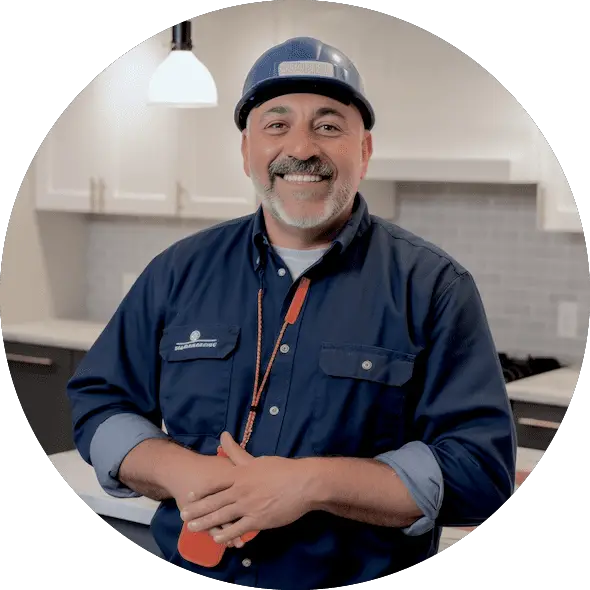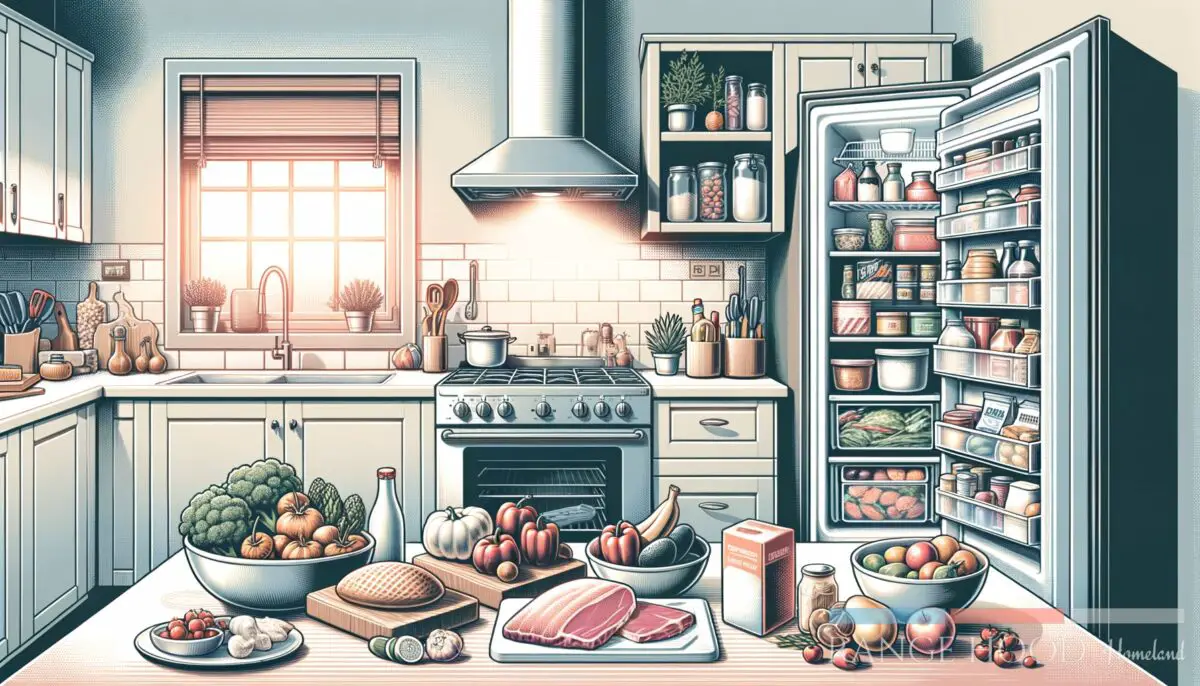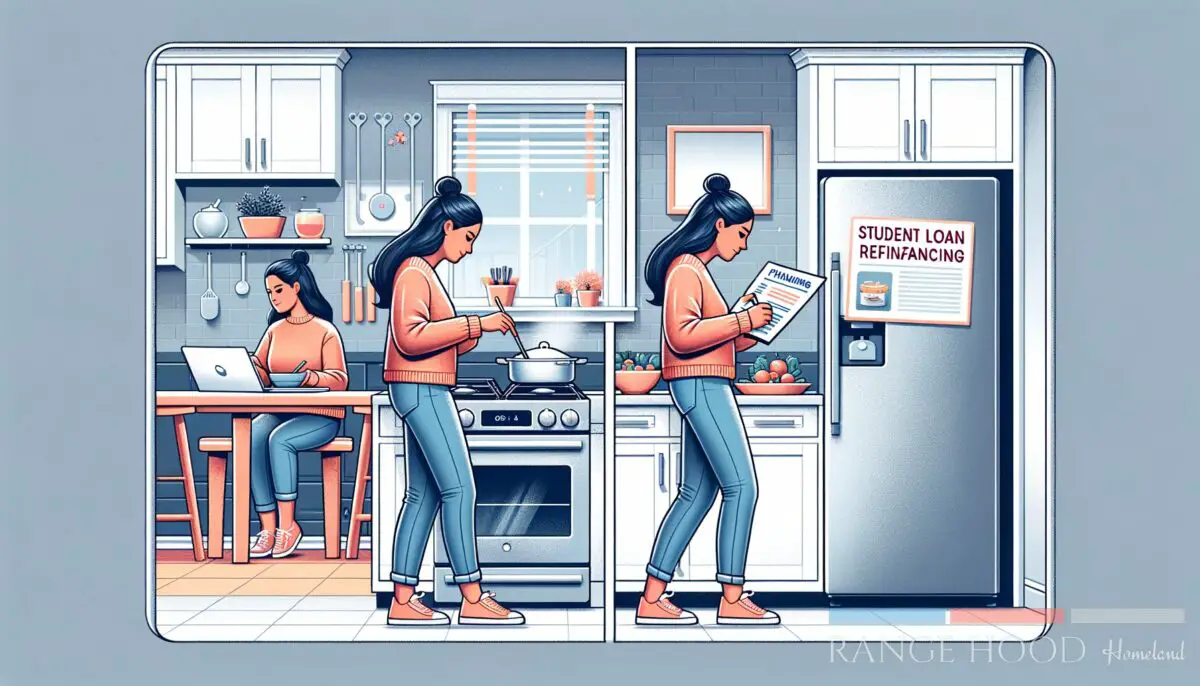Ever dived into a debate as heated as gas vs. electric?
Well, choosing the right kitchen ventilation system sparks just as much passion among home chefs and design aficionados. Just like finding the perfect sneaker can elevate your game, picking the right vent hood can dramatically improve your kitchen’s air quality.
Why does picking the right ventilation matter, you ask? It’s all about keeping your kitchen fresh and your family healthy.
In this post, we cover everything from ducted hoods to the allure of artisan-made chimneys. Check out our guide to the best range hoods to get started.
If you are a visual learner, check out this video titled ‘How to Properly Vent Your Range – The Ultimate Guide to Kitchen Ventilation’
Key takeaways
- Decide between ducted and ductless systems based on your kitchen’s layout and needs.
- Match the ventilation power to your cooking habits for effective air purification.
- Choose a style that complements your kitchen’s design and fits the space properly.
- Consider the noise level for a more comfortable kitchen environment.
How do you ensure your kitchen breathes well?
When setting up your kitchen, the importance of a proper ventilation system can’t be overstated. It’s not just about whisking away the smoke from your sizzling pan but also ensuring your kitchen is a healthy, enjoyable place to cook and gather.
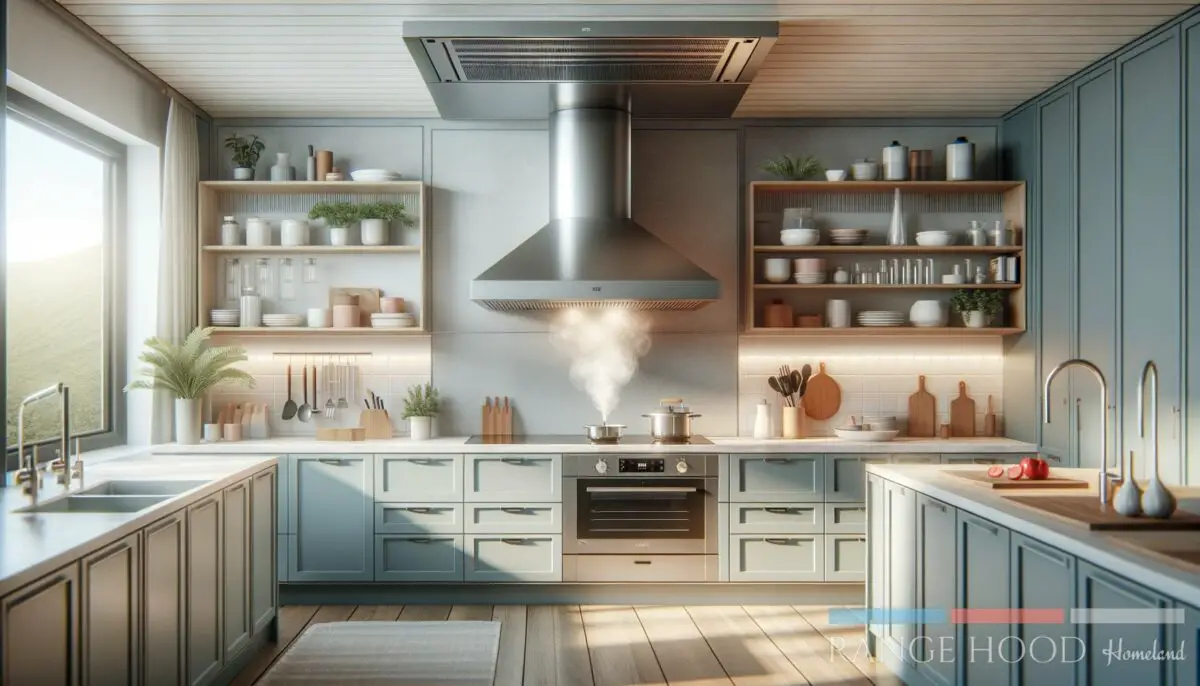
With the plethora of options out there, how do you choose the system that best fits your culinary space and habits? Let’s dive into the essentials of selecting the perfect ventilation system for your kitchen, ensuring every dish is a breath of fresh air.
1. Determine the exhaust system type
First things first, decide between a ducted or ductless system. A ducted system expels air outside, making it more effective at clearing out smoke and odors.
On the other hand, a ductless system filters and recirculates air within your kitchen. While not as efficient as their ducted counterparts, ductless hoods are a necessity where external venting isn’t feasible.
Check out the differences between ducted and ductless hoods to see which suits your home better.
Ducted hoods tend to offer superior ventilation but require a pathway to the outside, which may not be possible in all kitchen layouts. Ductless models, although easier to install, require regular filter changes and might not cope well with high-heat cooking methods.
Weighing the pros and cons of each system is crucial in making an informed decision.
2. Assess the ventilation power required
The power of your ventilation system, measured in cubic feet per minute (CFM), should match your cooking habits and the size of your cooktop. High-heat, frequent cooking demands a system with higher CFM for effective air purification.
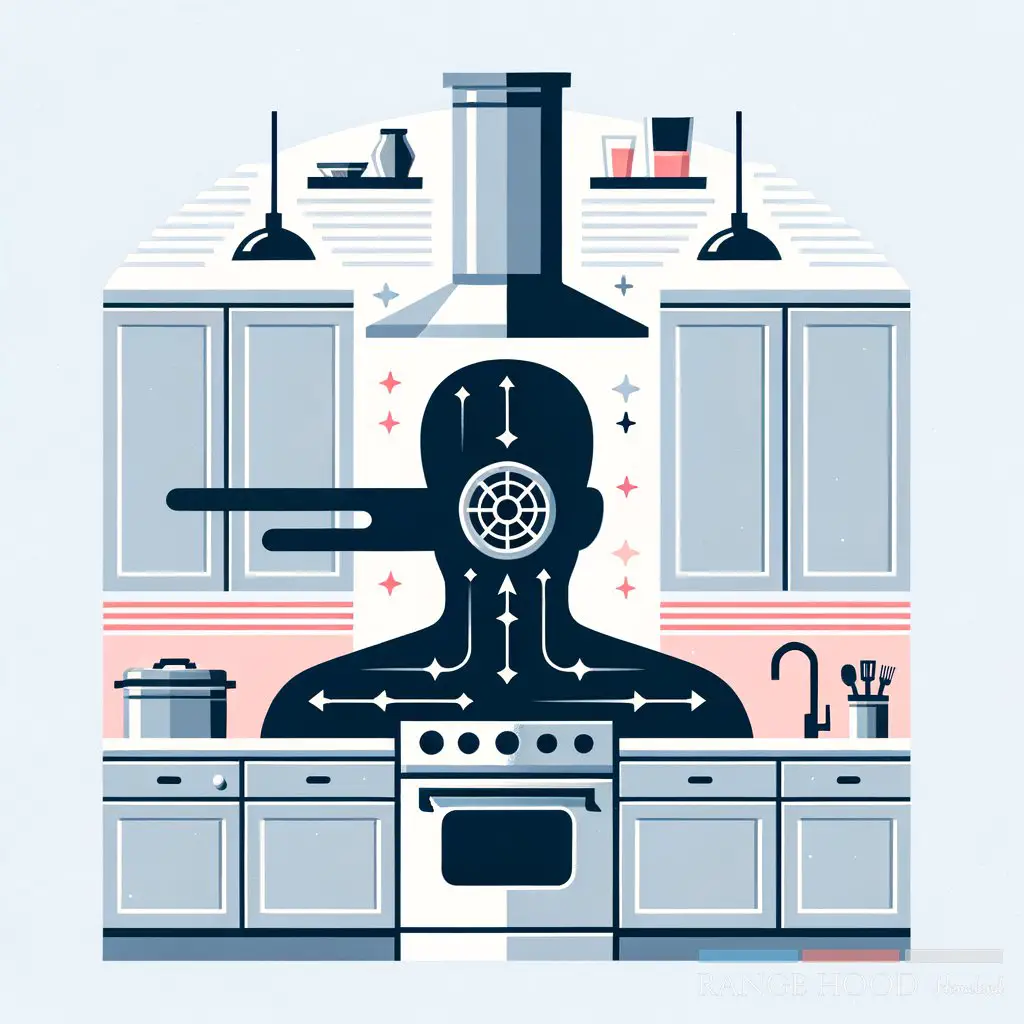
Standard cooking practices can do well with a moderate CFM rating. Understanding the importance of CFM will ensure your kitchen remains clear of smoke and odors, no matter what’s cooking.
Simply put, a high-powered gas range will need a more robust ventilation system compared to an electric cooktop used occasionally. Also, consider the size of your kitchen; larger spaces might require systems with higher CFM to circulate air effectively.
Explore how to calculate the CFM requirements for your kitchen before making a choice.
3. Choose the right style and size
Vent hoods come in an array of designs, from under-cabinet models to eye-catching island hoods. The style you choose should not only complement your kitchen’s aesthetic but also fit the space it needs to occupy.
An oversized hood can overwhelm a small kitchen, while a too-small model won’t ventilate effectively.
Size is equally crucial. A hood should cover the entire width of your cooktop and preferably extend a bit over the sides.
This ensures comprehensive capture of smoke, steam, and odors. For specific styles that might fit your kitchen, consider browsing options like the best island-mount range hoods.
4. Noise level considerations
Kitchen hoods generate noise, measured in sones. A quieter kitchen environment necessitates a hood with low sone levels, especially in open-concept homes where the kitchen blends into living areas.
Some models feature variable fan speeds, allowing you to adjust the noise level based on your current cooking needs.
It’s a balance between power and peace. Higher CFM models, while more efficient at removing air, can be louder.
It’s essential to find a unit that offers the right mix of ventilation power and noise level for your comfort. Check out these insights on local vs inline blowers for quieter operation options.
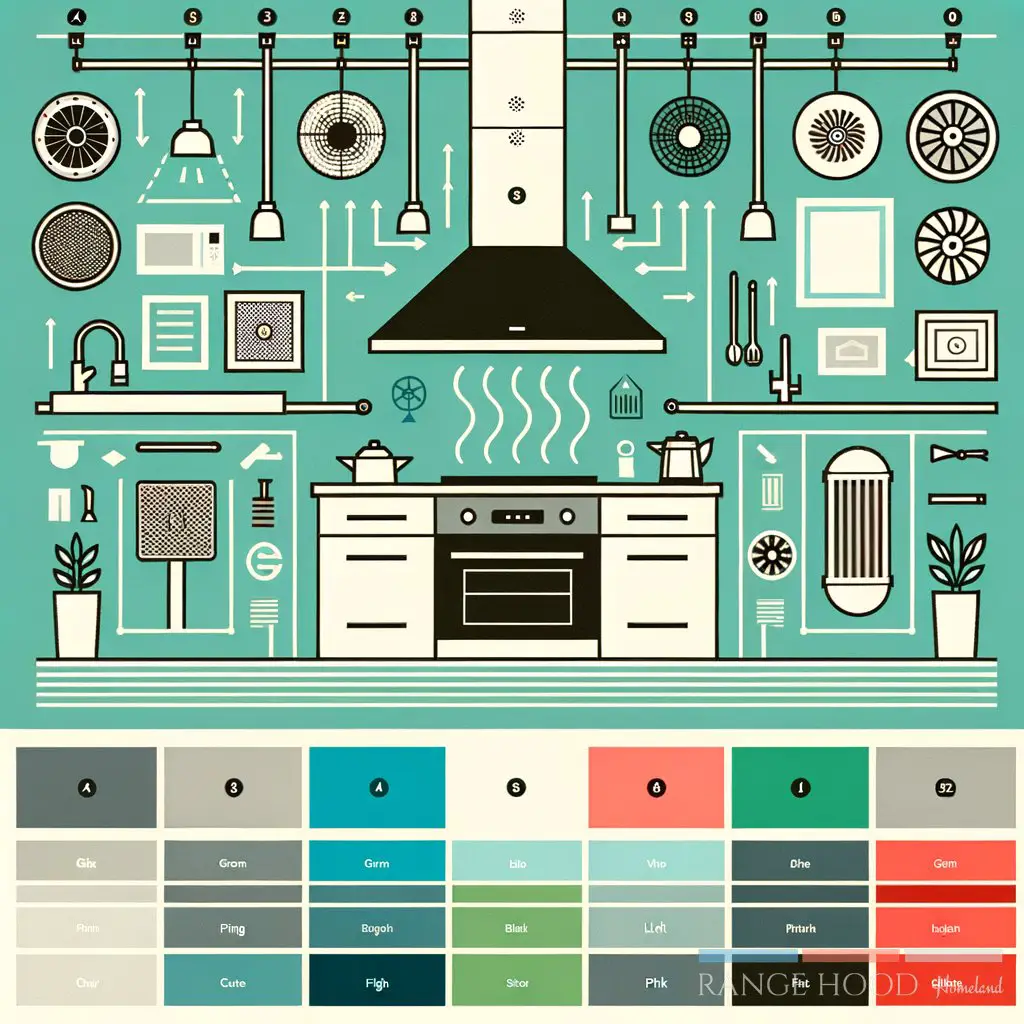
5. Consider the installation and maintenance
Finally, ponder the installation process and long-term maintenance. Do you have the skills and tools to install it yourself, or will you need to hire a professional?
Ducted systems, for example, usually require more complex installation. Maintenance-wise, think about ease of filter cleaning or replacement.
A hood that’s hard to maintain might not perform optimally over time.
“Regularly check and clean your vent filters to avoid buildup that can impede airflow. Invest in a kitchen fan to assist in air movement, especially in kitchens where installing a ducted system is not feasible.These steps ensure your kitchen remains a pleasant, smoke-free zone for cooking and gathering.”
Knowing the installation nuances beforehand can save you time and headaches. Similarly, a low-maintenance hood will ensure your kitchen stays fresh with minimal effort.
Dive into the details of installing a ducted range hood and the ease of maintaining different models before making your decision.
COSMO COS-63190S Wall Mount Range Hood

COSMO COS-63190S Wall Mount Range Hood
More kitchen ventilation tips
When it comes to keeping your kitchen ventilation at peak performance, a few more practices can make all the difference. While the right system is crucial, how you use and maintain it can significantly impact its effectiveness.
Beyond choosing the perfect hood, here are some extra steps to ensure your kitchen remains a pleasant, smoke-free zone for cooking and gathering.
- Regularly check and clean your vent filters to avoid buildup that can impede airflow.
- Opt for cooking methods that generate less smoke, such as steaming or baking, when possible.
- Ensure proper kitchen layout to facilitate natural air circulation even when the hood is not in use.
- Invest in a kitchen fan to assist in air movement, especially in kitchens where installing a ducted system is not feasible.
- Keep windows open during heavy cooking to help clear out smoke and odors faster.
Dos and don’ts of maintaining kitchen ventilation
Navigating the maintenance of your kitchen’s ventilation system doesn’t have to be complicated. Here are some straightforward do’s and don’ts to keep in mind:
| Dos | Don’ts |
|---|---|
| Do clean the filters regularly. | Don’t ignore strange noises from the hood; it may indicate a problem. |
| Do check for ductwork leaks annually. | Don’t attempt complex repairs or installation yourself if unsure. |
| Do ensure that exterior vents are not obstructed. | Don’t use the hood without its filter. |
| Do use the hood even for light cooking to maintain air quality. | Don’t delay replacing worn-out parts. |
Keeping your ventilation system in top condition requires regular maintenance and mindful use.
Advantages and disadvantages of kitchen ventilation
Having a well-ventilated kitchen is not just about removing smoke and odors; it impacts your home’s air quality, your comfort while cooking, and even your health. Let’s break down the pros and cons of having an efficient kitchen ventilation system.
Advantages
- Improves air quality: Reduces pollutants that can cause health problems.
- Removes excess heat: Makes the kitchen more comfortable while cooking.
- Controls moisture: Helps prevent mold growth and structural damage.
- Decreases cooking odors: Keeps the home smelling fresh.
- Increases property value: A well-ventilated kitchen is a desirable feature.
Disadvantages
- Installation can be costly: Especially for ducted systems requiring structural modifications.
- Maintenance requirements: Filters need regular cleaning and possible replacement.
- Noise: Some systems can be loud, especially at higher settings.
- Space requirements: May require sacrificing cabinet space or adjusting kitchen layout.
- Aesthetics: Large hoods can dominate the kitchen design, which might not appeal to everyone.
Opinion: As someone who’s not an expert but has spent a fair amount of time tinkering around kitchens, both small and large, I’ve come to appreciate the real value of a good ventilation system. It’s one of those aspects of kitchen design that doesn’t get enough spotlight until you’re stuck with lingering odors after a fish fry or dealing with excess smoke.
From personal experience, a well-chosen and correctly installed vent can make a world of difference in maintaining a comfortable, clean cooking environment. It’s interesting to see how technology in this space has evolved, like the options covered in this guide on the best range hoods.
While it might seem like a hefty investment upfront, the long-term benefits to your kitchen’s air quality and your own comfort while cooking can be substantial.
It’s fascinating how a seemingly simple decision, like choosing a kitchen hood, intersects with broader themes of home design, health, and even sustainability. The choices we make in our kitchens, from the appliances we select to the materials we prefer, impact not only our daily lives but also our environmental footprint.
Embracing efficient, well-designed kitchen ventilation is a step towards a more sustainable, enjoyable cooking experience. I’m always eager to learn more and see how innovations in this space can further enhance our kitchens in the years to come.
Frequently asked questions (FAQ)
What should I do if I can’t install a ducted hood in my apartment?
If you’re in a situation where installing a ducted hood isn’t possible, like in many apartments, consider a ductless range hood. These hoods use charcoal filters to clean the air before recirculating it back into your kitchen.
While not as efficient as ducted models, they’re significantly better than having no ventilation. Remember, the key with ductless hoods is regular filter changes to maintain efficiency.
Can I install a range hood myself?
Installing a range hood, particularly a ductless model, can be a feasible DIY project if you’re handy and familiar with basic electrical work. However, ducted models, which require cutting through walls or ceilings and installing ductwork, might be best left to professionals.
Either way, ensure you’re comfortable with the installation guide and safety requirements before you start.
How usually should I replace the filters in my ventilation system?
The frequency of filter replacements varies based on the type of filter and how usually you cook. For metal mesh filters used in many ducted hoods, cleaning rather than replacing is usually sufficient, and should be done every 1-2 months.
Charcoal filters in ductless models, however, can’t be cleaned and should typically be replaced every 4 to 6 months, depending on your cooking frequency.
Final thoughts
We’ve covered quite a bit of ground on choosing the right kitchen ventilation system. From understanding the types of systems available to considering the size, style, and noise level, getting your kitchen’s ventilation right can significantly enhance your cooking experience and maintain a healthy home environment.
So, whether you’re renovating, building a new kitchen, or simply looking to upgrade your existing setup, keeping these tips in mind will help you make an informed decision that suits your space and cooking style.
How will you integrate these insights into your kitchen design or upgrade? Did I cover everything you wanted to know? Let me know in the comments section below.I read and reply to every comment. If you found this article helpful, share it with a friend, and check out my full blog for more tips and tricks on kitchen renovations.
Thanks for reading and here’s to a well-ventilated kitchen that inspires your culinary adventures!

